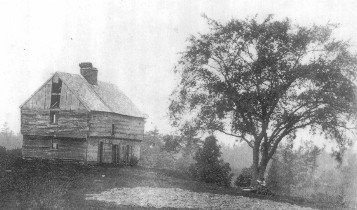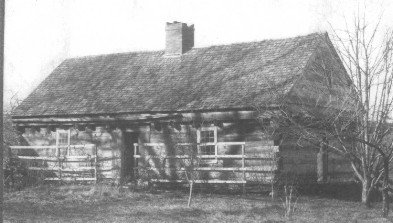Disclaimer
The Dover Public Library website offers public access to a wide range of information, including historical materials that are products of their particular times, and may contain values, language or stereotypes that would now be deemed insensitive, inappropriate or factually inaccurate. However, these records reflect the shared attitudes and values of the community from which they were collected and thus constitute an important social record.
The materials contained in the collection do not represent the opinions of the City of Dover, or the Dover Public Library.
Garrisons around Dover
Garrisons around Dover
From Dover History by Robert Whitehouse, c 1987 and Landmarks in Ancient Dover by Mary Thompson, c1892.
Garrisons were largely fortified houses, or as a history tells us, the Second Meeting House on Dover Point Road was built in 1654 and fortified in 1667. The houses of Peter Coffin, Esq. and Richard Otis were ordered by the government, March 13, 1683-4, to be immediately fortified for the security of the inhabitants of the vicinity.
Meeting House Garrison (fortified 1667) was located on the west side of Dover Point Road. The house and its fortifications are now gone. Captain Peter Coffin agreed to build a fort around the meeting house on Dover Neck 100 feet square, with two Sconces 16 feet square, all the timbers to be 12 inches thick, and the wall to be 8 feet high, with sills and braces, The Governor declared in 1684 “that the meeting-house shall be the main garrison for defending the inhabitants against the attacks of the enemy.”
Captain John Tibbet’s Garrison was on Dover Point Road a little over one-fifth of a mile north of the Meeting House and about 12 rods west of the road.
Pinkham’s Garrison was located north of Tibbet’s or about 46 rods south-west of the corner of Bellamy Lane and Dover Point Road. This garrison was built by Richard Pinckhame, of the Dover combination. It remained in the Pinkham family for six generations. The garrison was taken down in 1825.
Samuel Tibbet’s Garrison was on the upper part of Dover Neck on the east side.
The Gerrish Garrison was said to have stood a short distance below the Sawyer’s residence on Middlebrook Farm, now Green Pastures Convalesant Home, on Dover Point Road. Miss Thompson says it no doubt stood near the Gerrish mills at the lowest falls in the Bellamy River.
Field’s Garrison stood near the Back River school house on the opposite side of the road. This garrison was built by Lieutenant Zachariah Field.
Meserve’s Garrison was built by Clement Meserve whose land adjoined the Field land. It was standing in 1875 but was taken down before 1888.

Meserve Garrison
Torr’s Garrison was located on the Furham Road in the area of the junction of Bellamy Road beyond Dunn’s Woods, also called Torr’s Woods. The first garrison of this name was probably built by John Knight. His widow, Leah married Benedictus Torr. The first Torr garrison was said to have been burned down by the Indians. Benedcitus Torr quickly built another one. It was later dismantled and the wood used in other farm buildings.
Damm’s-Drew’s-Round’s Garrison was built in 1675 on the west side of Spruce Lane in the Back River District. It was moved to Woodman Institute in 1915.

Damm Garrison
Tristram Coffin’s Garrison: Miss Thompson states the location to be near the Belknap school on Silver Street. Dr. Quint states it was in the vicinity of Governor Martin’s house (16 Nelson St) and Silver Street where men found relics there, in digging. This garrison was built by Tristram, son of Peter. It escaped destruction in the Indian attack of 1689.
The Hayes Garrison was on the northeast corner of Mineral Road. It was a minor garrison of a later day which was taken down in 1812.
Peter Coffin’s Garrison stood on an elevation, now cut down, between orchard and Waldron Streets, about 60 feet from Central Avenue. Coffin’s garrison and the mill were burnt by the Indians June 28, 1689.
Waldron’s Garrison stood on the west side of Central Avenue between First and Second Streets. The present Court House stands on part of the garrison site. This garrison was built by Major Richard Waldron, the founder of the Cocheco settlement. It was destroyed on the night of the 1689 Indian attack in which Waldron was murdered.
The Otis Garrison was located on the west side of Central Avenue near Milk Street. It was south of and adjoining the Christian Science Church on Mt. Vernon Street. This garrison was settled by Richard Otis who settled in Dover around 1655. In 1683 NH authorities ordered his house to be immediately fortified as one of the by-garrisons of Cocheco, for the security of the neighboring inhabitants. It was destroyed by Indians in the 1689 attack. Richard Otis, his son Stephen and daughter Hannah were killed . His wife and 28 others were taken captive.
Heard’s Garrison was on the west side of Central Avenue, before the bend in the road to the Wentworth Hospital It was near the brick house at 722 Central Avenue. It was built by Captain John Heard of the Dover Combination of 1640. It escaped destruction in the attack of 1689, at which time John Heard was already dead. The government stationed soldiers there during the 1690s..
Varney’s Garrison was on Blackwater Road in Dover some distance north west of Willand’s Pond. This two story garrison is assumed to be built by Stephen Varney. The upper story projected three feet beyond the first. The garrison provided shelter to all the neighboring farmers. It was taken down not long after 1834.
Paine’s Garrison was near 93 Portland Street near the corner of Rogers Street. Thomas Paine’s garrison was surrounded by the Indians during the June 27, 1689. It was probably destroyed that night for no mention of it is made after that.
This historical essay is provided free to all readers as an educational service. It may not be reproduced on any website, list, bulletin board, or in print without the permission of the Dover Public Library. Links to the Dover Public Library homepage or a specific article's URL are permissible.
